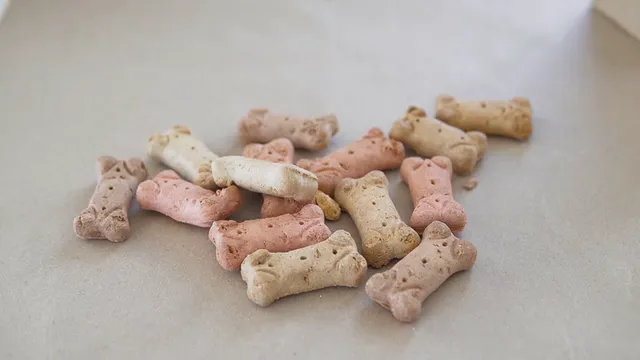Introduction
Raw food diets for pets are gaining popularity. Many pet owners believe these diets improve health and vitality. A structured transition plan is crucial for a smooth switch. It helps pets adjust without digestive issues.
And if you’re wondering how to store all this raw goodness, consider investing in a Pet Food Storage Container. It keeps your pet’s food fresh and free from pesky pests, ensuring that every bite is as nutritious as intended!

Summary and Overview
A raw food diet primarily consists of uncooked meat, bones, and organs. Compared to kibble, raw feeding offers numerous benefits. These include improved digestion, healthier skin, and shinier coats. However, many pet owners worry about digestive upsets during the transition. A gradual change is essential to avoid these issues. This guide aims to provide a clear step-by-step plan and tips for a successful transition to raw feeding.
As you embark on this journey, you might want to ensure your pet is well-hydrated with a Pet Water Fountain. It encourages them to drink more water, which is essential for digestion and overall health, especially when switching diets!

Understanding the Raw Food Diet
What is Raw Feeding?
Raw feeding means providing pets with uncooked, whole foods. This diet includes muscle meat, bones, organs, and some vegetables. The main idea is to mirror what dogs would naturally eat in the wild.
Nutritionally, raw diets offer several advantages. They contain high protein levels, essential fatty acids, and important vitamins. These nutrients support overall health, improve digestion, and boost energy levels in pets.
Some common misconceptions exist about raw feeding. Many believe it leads to nutritional imbalances or health risks. However, when done correctly, raw feeding can be safe and beneficial.

If you’re considering a raw food diet for your pet, think about these health benefits. A biologically appropriate diet could lead to a happier, healthier furry friend. And don’t forget the power of Dog Supplements for Joint Health. They can help ensure your pup stays active and agile, especially as they age!
Benefits of a Raw Diet
Feeding pets a raw diet offers many health benefits. One of the most noticeable changes is improved coat quality. Pets often have shinier and healthier fur. This change results from better nutrition found in raw foods.
Additionally, raw diets support better digestion. Many pets experience reduced gas and firmer stools. This can lead to less discomfort and improved overall gut health. Raw feeding can also boost energy levels. Pets tend to be more active and playful, thanks to a diet rich in natural nutrients.
Weight management is another key benefit. Many pets maintain a healthy weight more easily on raw food. This diet helps reduce overeating often seen with processed foods. Moreover, raw diets can help minimize allergies and skin irritations. Pets often experience fewer allergic reactions, leading to healthier skin.
With so many advantages, it’s worth considering a raw diet for your furry friend. Always consult with a veterinarian before making significant changes to your pet’s diet. They can provide personalized guidance to ensure your pet thrives on raw food. And for those training sessions, don’t forget to stock up on Dog Treats for Training. They work wonders for motivation!

Step-by-Step Transition Plan
1. Preparation Phase
Before starting a raw food diet, preparing both your pet and yourself is essential. Start by familiarizing yourself with raw feeding principles. Gather information and resources about suitable raw food options. This will help you feel more confident during the transition.
Fasting your pet for 12 to 24 hours is often recommended before introducing raw food. This period allows their digestive system to reset. It may seem daunting, but most pets handle it well. Just ensure they have access to fresh water during this time.
Next, decide on the appropriate raw food for your pet. Look for high-quality protein sources like chicken, turkey, or beef. Ensure the food is well-balanced and includes essential nutrients. It’s also helpful to consult with a veterinarian to confirm the chosen diet meets your pet’s specific needs.
As you prepare, gather resources for raw food options to make the transition smoother. This preparation sets the stage for a successful raw feeding experience. And while you’re at it, consider getting a Dog Crate for Training. It can be a great tool for managing your pet during the transition!

2. Gradual Transition Schedule
A gradual transition is often the safest method for introducing raw food. Here’s a suggested 10-day schedule to follow.
– Days 1-3: Start with 25% raw food and 75% of the current diet.
– Days 4-6: Shift to a 50/50 mix of raw and old food.
– Days 7-9: Increase raw food to 75%, reducing the old food to 25%.
– Day 10: Feed 100% raw food.
Throughout this process, monitor your pet’s reactions. Keep an eye on their stool quality and overall behavior. Signs of distress, such as loose stools or vomiting, may indicate the need for a slower transition. And if you’re looking for a fun way to keep your pet engaged, consider Interactive Dog Toys. They provide mental stimulation and keep your furry friend entertained!
Adjust portions based on your pet’s weight and activity level. If necessary, make modifications to the schedule based on their response. Keeping a journal of your pet’s progress can help you track changes and ensure a smooth transition.
3. Cold Turkey Transition
For some pets, a cold turkey transition works well. This method involves an immediate switch to raw food. However, it’s crucial to consider your pet’s health. Pets with sensitive stomachs may require extra caution.
Begin by fasting your pet for a meal before introducing raw food. This helps prepare their digestive system for a new diet. When making the switch, observe for any signs of distress, such as vomiting or diarrhea.
If problems arise, take immediate steps to address them. This could include reverting to their previous diet temporarily or consulting a veterinarian if symptoms persist. Always prioritize your pet’s comfort during this transition.
This method can be effective for healthy pets, but gradual approaches are generally safer for those with dietary sensitivities. And don’t forget to keep your pet’s space tidy with Pet Cleaning Supplies for those little accidents!
Expected Changes During the Transition
Common Symptoms to Expect
Transitioning to a raw food diet can be a big change for your pet. During this process, you might notice some detox symptoms. These can include vomiting, diarrhea, or even bad breath. These reactions are your pet’s way of expelling built-up toxins from their previous diet. It’s essential to remember that these symptoms are temporary and often part of the detoxification process.
You may also observe changes in your pet’s stools. Initially, they might be softer or more frequent, which is normal as their digestive system adjusts. Some pets even experience mucus-covered stools during this time. Hydration is crucial; ensure your pet always has access to fresh water. This helps support their digestive health and can ease symptoms like diarrhea.
Stay vigilant and patient during this transition. Your pet is adapting to a healthier lifestyle, and these changes are a sign of their body working to adjust. And remember, a Pet First Aid Kit can be a lifesaver during this transition, ensuring you’re prepared for any unexpected bumps along the way!

Monitoring Progress
Tracking your pet’s progress is key to a successful transition. Start by keeping a feeding diary. Document what your pet eats and any changes in their behavior or health. This will help you identify patterns and make necessary adjustments.
Maintain a consistent feeding routine. This helps your pet feel secure and understand when to expect meals. If you notice any negative reactions, such as digestive upset, consider adjusting the food types. You might need to slow down the transition or change the protein source.
Using a checklist can help ensure that all aspects of the transition are covered. This way, you won’t miss any important steps in your pet’s journey to a raw food diet. And while you’re at it, think about investing in a Dog Nail Clipper to keep those paws in tip-top shape!

Conclusion
A well-planned raw food transition offers many benefits for your pet. You can expect improved health, a shinier coat, and increased energy levels. Remember, patience and careful observation are essential during this process. Each pet is unique and may transition at their own pace. Embrace this journey, and you’ll likely find your furry friend thriving on their new diet. Don’t forget to pamper them with a Dog Bed for Comfort so they can rest and recover!

FAQs
What is the best method to transition my dog to a raw diet?
Transitioning to a raw diet can be done gradually or abruptly. The gradual method is generally safer. It involves slowly increasing raw food while decreasing kibble over several days. This approach suits dogs with sensitive stomachs or those used to processed food. Conversely, the cold turkey method entails an instant switch to raw. It can be effective for healthy dogs but may cause digestive upset if not handled carefully. Assess your dog’s health and comfort level before choosing a method.
How long does it take to transition to a raw diet?
The duration of transition varies by method. Gradual transitions typically take about 10 to 14 days. You start with small amounts of raw food, gradually increasing it while monitoring your dog’s response. A cold turkey switch may be immediate, but some dogs may need additional time to adjust. Always pay attention to your dog’s behavior and digestive health during this process.
What should I do if my dog refuses to eat raw food?
If your dog shows resistance to raw food, try some tricks. Add appealing toppers like bone broth or a small amount of canned fish. Mixing raw with a bit of their old food can help ease the transition. Offering a variety of proteins can also spark interest. If your dog continues to refuse, consult your veterinarian for further guidance. Picky eaters often require patience and creativity to adjust.
Are there any risks associated with raw feeding?
While raw feeding has benefits, there are potential risks. Bacterial contamination is a concern, so always handle food safely. Some dogs might experience digestive upset during the transition. To mitigate risks, ensure a balanced diet and consult a veterinarian about your dog’s specific needs. Regular health check-ups can help monitor your pet’s well-being on a raw diet.
Can I mix raw food with kibble?
Mixing raw food with kibble can be tempting, but it’s generally not recommended. Combining the two can confuse your dog’s digestive system. If you prefer to introduce raw gradually, consider switching entirely to raw after a transition period. This allows your dog to adjust better without the complications of mixed diets.
What should I include in my dog’s raw diet?
A balanced raw diet should consist of various proteins such as beef, chicken, turkey, and fish. Aim for an 80/10/10 ratio: 80% muscle meat, 10% bones, and 10% organs. Including vegetables can offer additional nutrients, but ensure they are digestible. Always research and plan to provide a well-rounded diet for your dog’s health.
How do I know if my dog is adjusting well to raw food?
Signs of successful adjustment include improved energy levels, good appetite, and healthy stools. Monitor your dog for any digestive issues, such as diarrhea or vomiting, which may indicate distress. A gradual transition can help ease the process. If your pet seems happy and healthy, they are likely adjusting well to their new diet.
Please let us know what you think about our content by leaving a comment down below!
Thank you for reading till here 🙂
For more information on raw diet protein sources, check out this article on raw diet protein sources.
All images from Pexels





